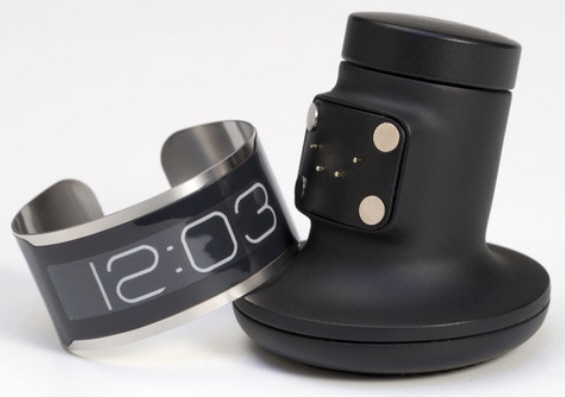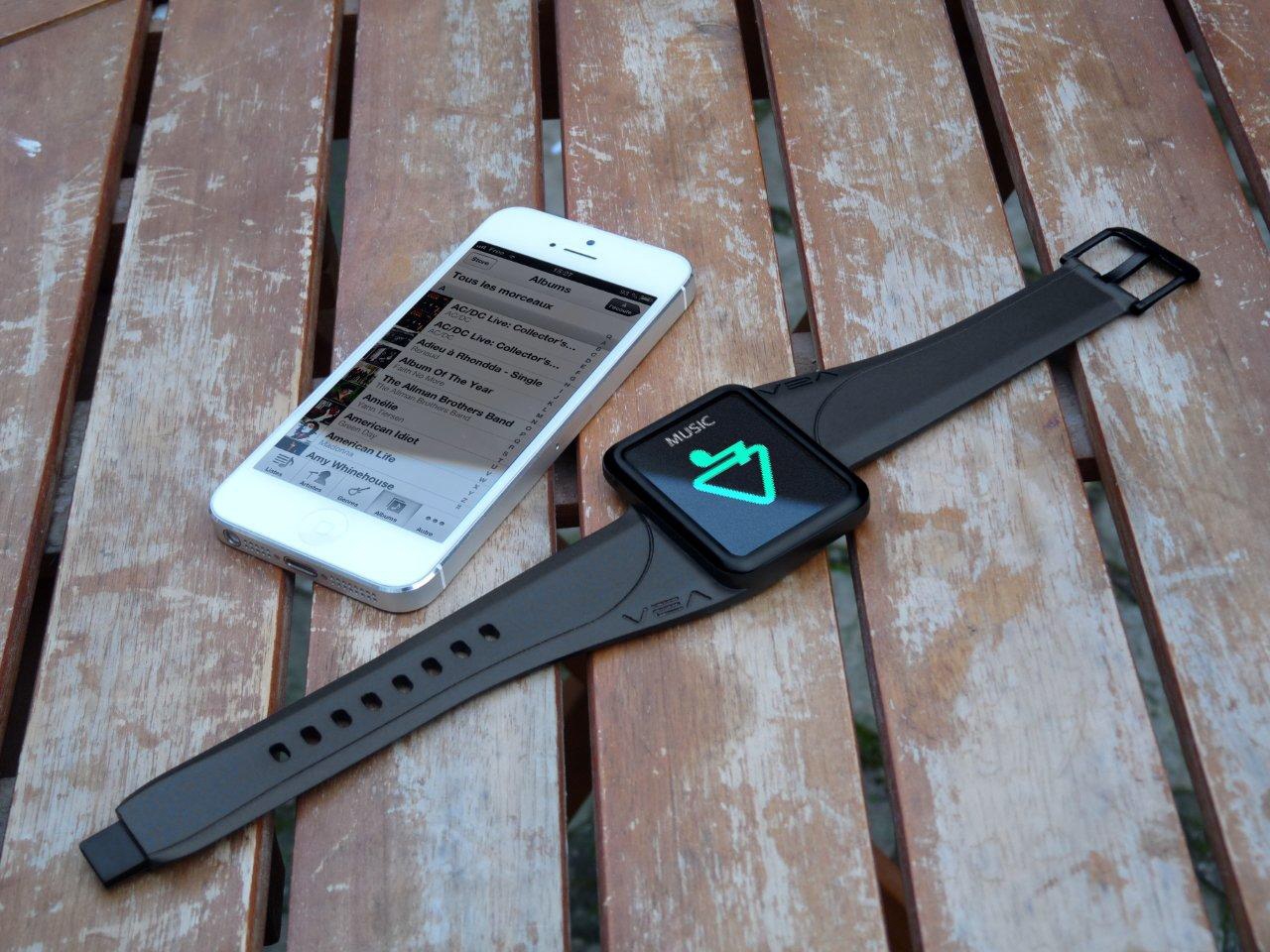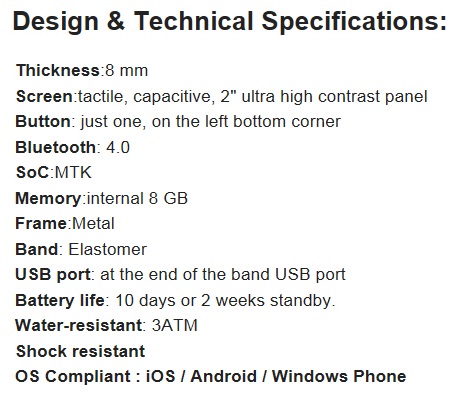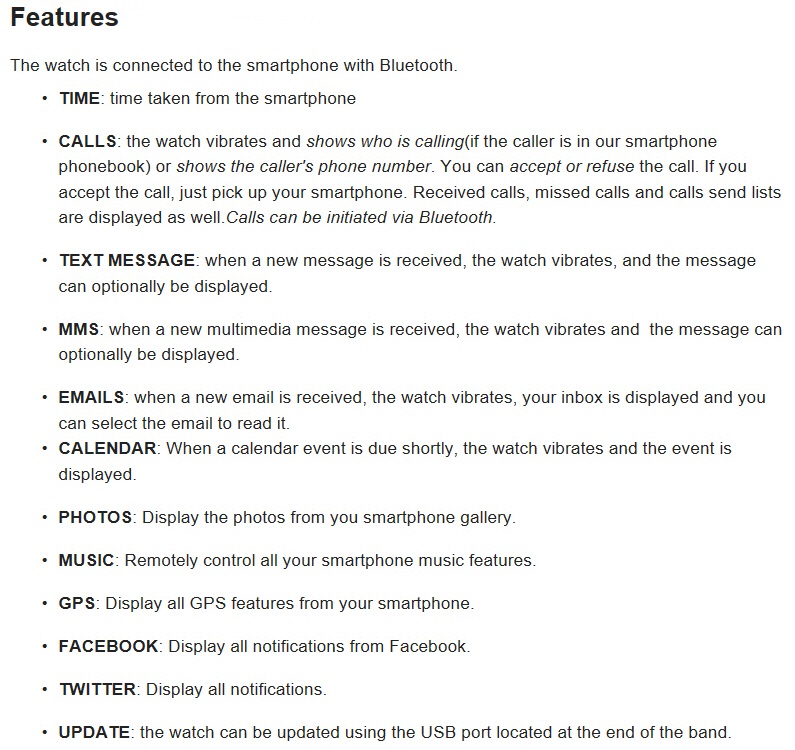Amidst all the talk these days of Google (News  - Alert), Apple and Samsung - let's call them the "big three" - fighting it out for the seemingly new category of "smart watches" and with all of the fighting taking place solely in the minds and sensationalistic headlines of tech pundits who have actually never seen a smart watch concept from any of the big three - it's almost been lost that there are a number of other companies in this space with real products. We'll cover what the big three are up to elsewhere though we'll do so from a different perspective than what it is they may try to deliver or what their devices might look like.
- Alert), Apple and Samsung - let's call them the "big three" - fighting it out for the seemingly new category of "smart watches" and with all of the fighting taking place solely in the minds and sensationalistic headlines of tech pundits who have actually never seen a smart watch concept from any of the big three - it's almost been lost that there are a number of other companies in this space with real products. We'll cover what the big three are up to elsewhere though we'll do so from a different perspective than what it is they may try to deliver or what their devices might look like.
Let's quickly note what a smart watch is, generally speaking - a wearable device that tells time and that can also be tethered to a smartphone - either Android (News - Alert) devices or iPhones. These devices can in turn provide information from the smartphone and can possibly control some aspects of the smartphone.
There's Sony's smart watch, which is in the market but hasn't caught on. And there is the Pebble Watch of course, whose one claim to fame to date is that the tiny company behind it - Pebble Technology - has managed to raise $10 million dollars on Kickstarter to fund its development. Those folks that have participated through Kickstarter will be first in line to receive their Pebble and the company has slowly but surely started to ramp up delivery - the watch is now finding its iway into the hands of those people who contributed to the $10 million in funding.
.jpg) A number of tech media folks have had the opportunity to review the earlier releases of the Pebble. Chief among them and likely most visible is Walt Mossberg, who got one and more or less panned its initial iteration - primarily because the watch is not able to manage multiple inbound e-mails - after one arrives, if another arrives before you've read the previous email well, it is overwritten and disappears. This is true regardless of whether an Android device or an iPhone (News - Alert) is tethered to it.
A number of tech media folks have had the opportunity to review the earlier releases of the Pebble. Chief among them and likely most visible is Walt Mossberg, who got one and more or less panned its initial iteration - primarily because the watch is not able to manage multiple inbound e-mails - after one arrives, if another arrives before you've read the previous email well, it is overwritten and disappears. This is true regardless of whether an Android device or an iPhone (News - Alert) is tethered to it.
What this means is that a user can only read the most recent e-mail that was sent. It's an interesting issue to us that Pebble hadn't considered this a flaw that should have kept the watch from shipping but…Pebble is "working on it." We believe that this is a function of on board memory - there doesn't appear to be anywhere near enough memory on board.
Recently geek.com took a Pebble watch apart and found a very "tidy" little collection of parts and three LEDs in it that light up the display. The watch was deemed "not repairable" given how it is assembled - so if the battery inside of it (which should last a week between charges) goes south, you are kind of stuck.
We're still excited to get ours in a few months and look forward to experiencing it and conducting our own hands-on review. Meanwhile our colleague Rich Steeves just got his, but he put the dollars up on Kickstarter - we ourselves only pre-ordered through their website.
 There are others as well, such as the 0.8 mm thin CST-1 from Central Standard Time, which is another Kickstarter-funded project, this one to the tune of a mere $1.03 million. It's billed as the world's thinnest watch, and its design, which is based on an E Ink display, is often noted in relation to what an iWatch design might look like. For this reason it is often confused as a smart watch, but in fact it's nothing more than a piece of jewelry - there is absolutely nothing smart about it, except perhaps for how cool it possibly looks.
There are others as well, such as the 0.8 mm thin CST-1 from Central Standard Time, which is another Kickstarter-funded project, this one to the tune of a mere $1.03 million. It's billed as the world's thinnest watch, and its design, which is based on an E Ink display, is often noted in relation to what an iWatch design might look like. For this reason it is often confused as a smart watch, but in fact it's nothing more than a piece of jewelry - there is absolutely nothing smart about it, except perhaps for how cool it possibly looks.
VEA Digital and Caiman Design
 Then there is VEA, which in partnership with Caiman Design has delivered several very interesting smart watch attempts - beginning with the VEAndroid - possibly the very first real smart watch. Granted, the VEAndroid shown on the right (which predates Caiman Design's participation) is a design that dates back a few years now, and is well…a tad clunky! Regardless, VEA has been working on smart watch designs since 2006, and brings a lot of experience to today's smart watch game.
Then there is VEA, which in partnership with Caiman Design has delivered several very interesting smart watch attempts - beginning with the VEAndroid - possibly the very first real smart watch. Granted, the VEAndroid shown on the right (which predates Caiman Design's participation) is a design that dates back a few years now, and is well…a tad clunky! Regardless, VEA has been working on smart watch designs since 2006, and brings a lot of experience to today's smart watch game.
.jpg) There are others in VEA's lineup that actually function as cell phones, the design of which is currently embodied by VEA's unique current generation Sportive - an actual cellular phone one can use to make calls as well utilize as part of a fitness system of wearable sensors. It is shown here on the left. The design is far more refined yet it is never the less quite large. A camera, GPS and an MP3 player are provided, along with a 1.5 inch touchscreen, Bluetooth, 8 GB of storage, and an SOS (News - Alert) button that sends out your location and other vital info should anything happen on your run. It's expensive, running between €399 ($513) and €499 ($641).
There are others in VEA's lineup that actually function as cell phones, the design of which is currently embodied by VEA's unique current generation Sportive - an actual cellular phone one can use to make calls as well utilize as part of a fitness system of wearable sensors. It is shown here on the left. The design is far more refined yet it is never the less quite large. A camera, GPS and an MP3 player are provided, along with a 1.5 inch touchscreen, Bluetooth, 8 GB of storage, and an SOS (News - Alert) button that sends out your location and other vital info should anything happen on your run. It's expensive, running between €399 ($513) and €499 ($641).
So much for the past and present. Now we come to the future and the new VEA Buddy - which is VEA's next generation smart watch,which uses Bluetooth to connect to, communicate with and control either an iPhone,Android or Windows Phone 8 smartphones. The VEA Buddy sports a two inch, very high contrast touchscreen, so in fact it is substantially sized (as can be seen next to an iPhone 5), yet the design begins to come much closer to delivering a "watch." 
We've been intrigued by the Buddy, so recently we arranged to chat with both VEA Digital's CEO Brigitte Bensaid and Caiman Design's founder and general manager Armand Billard about it. The two companies, both of which are based in France, work very closely together, with VEA providing the engineering, hardware and software expertise on the watches we've noted, and Caiman providing the physical design and user interface and user experience design for the Sportive and the Buddy.
The first thing we talked about was the design and the Buddy's size. Billard, who's baby the Buddy design is, noted that in fact the watch is not much larger - and in numerous cases it is smaller - than a typical men's luxury mechanical watch. We're familiar with a great many high end mechanical watches, and this is true. Excluding those luxury watches where thinness is a design element, at 8 mm the Buddy is thinner than many, if not most of them. Both Billard and Bensaid feel the overall design is in effect lightweight and elegant. We won't know of course until we've worn one, but we're optimistic on this.
Unlike the Pebble - which requires a variety of button pushes to move around its menus and has a black and white display - the Buddy is a full touchscreen color watch that uses a current generation, extremely low power LCD screen that is easily viewable in sunlight. A user setting also allows the display to provide information in either portrait or landscape mode - though this isn't auto-adjustable by the watch itself. The Buddy has one button on it and it acts like the home button does on an iPhone. The button will turn the watch on or off or cancel an action and go back to the time (home) screen. Bensaid and Billard note that the use of the LCD is both a user experience design choice as well as an engineering choice, and the two feel that it delivers a far better experience than the Pebble. In fact, though the LCD screen is usually the major culprit in battery power drain, Bensaid points out that the Buddy will run ten days on a single charge.
That is very interesting to hear, because the Pebble uses an E-Paper display that minimizes power consumption. The Pebble will run at least a week between charges, yet the Buddy will supposedly do better. Again, we won't know for sure until we've tested it, but a full color LCD touchscreen that delivers the same power usage or better than an E-Paper display is a major design advantage. Bensaid suggests that this is because the Buddy is built around next generation technology whereas the Pebble is built around technology that is likely two years old.
There are other notable design choices. The watch's strap is actually a USB cable that attaches directly to any USB port to charge. The watch is equipped with 8 GB of memory, which both Bensaid and Billard point out will easily handle numerous e-mails on the watch without losing or overwriting any - Walt Mossberg should be happy with that. Finally the Buddy supports Android, iOS and Windows Phone 8 - this is something Microsoft and Nokia should take note of ASAP. Unlike the Pebble, the Buddy will not initially launch with an SDK, so developers won't be able to do anything special with it. In large part neither Billard nor Bensaid see a real need for an SDK, though they do not preclude providing one at a later date. The full specs for the Buddy are provided below.

It is certainly worth noting that the watch is easily able to display navigation details from your smartphone - turn left, turn right, etc. as well as numerous notifications - from Twitter, Facebook (News - Alert), MMS and so on. The feature list is provided below.

The watch is expected to retail for $249, which is not exactly inexpensive, but volume sales would certainly be able to bring those costs down. The VEA Buddy is slated to launch in August of this year. Perhaps the company will make it down to our upcoming 2013 Wearable Tech Expo and Conference and show it off. We certainly are looking forward to having it go head to head with the Pebble at the very least. Meanwhile the company has launched its own crowdfunding initiative to help the watch launch. All in all we're very much looking forward to taking it for a test drive. Until then we'll leave you with the following video, which does a good job of showing how the Buddy works.
Edited by Brooke Neuman
Wearable Tech World Home
 Internet Telephony Magazine
Click here to read latest issue
Internet Telephony Magazine
Click here to read latest issue CUSTOMER
CUSTOMER  Cloud Computing Magazine
Click here to read latest issue
Cloud Computing Magazine
Click here to read latest issue IoT EVOLUTION MAGAZINE
IoT EVOLUTION MAGAZINE




